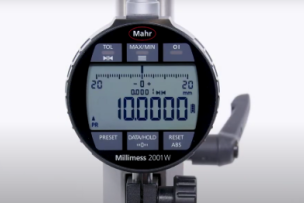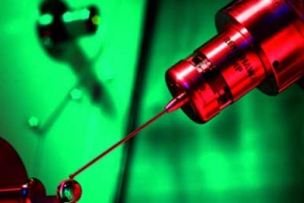Headquartered in Aurora, IL, Mitutoyo America Corporation is the world's largest provider of measurement and inspection solutions offering the most complete selection of machines, sensors, systems and services with a line encompassing CMM (coordinate measuring machines), vision, form and finish measuring machines, as well as precision tools and instruments, and metrology data management software. Mitutoyo's nationwide network of Metrology Centers and support operations provides application, calibration, service, repair and educational programs to ensure that our 8,500+ metrology products will deliver measurement solutions for our customers throughout their lifetime.
This unit of the Metrology Fundamentals series was developed by the Mitutoyo Institute of Metrology, the educational department within Mitutoyo America Corporation. The Mitutoyo Institute of Metrology provides educational courses, free on-demand training videos, and other resources across a wide variety of measurement related topics including basic inspection techniques, principles of dimensional metrology, calibration methods, and GD&T. For more information on the educational opportunities available from Mitutoyo America Corporation, visit them at www.mitutoyo.com/education.
This technical bulletin addresses the accuracy and calibration of digital, dial, and vernier calipers. The technical basis for this document is the American national standard (ANSI standard) entitled ASME B89.1.14-2018. This technical bulletin summarizes the most important technical issues; however, the ASME standard should be consulted for further information.
Accuracy Specifications
Two accuracy specifications cover the most important metrological characteristics of calipers. In accordance to the ASME standard, as well as the international standard ISO 13385-1, these two characteristics are called the partial surface contact error, E, and the scale shift error, S. The partial surface contact error applies to any measurements made using the outside measuring faces, and the scale shift error applies to measurements using any other measuring faces available on the caliper, such as inside, step, and depth measurement. The key difference is that all specifications apply when the zero is set using the outside measuring faces and therefore there is the possibility of larger errors when using the other measuring faces.
The table below lists the default specification values that are in the ASME B89.1.14 standard. These specifications are stated as maximum permissible errors, or MPE values, for the E and S errors. These values are only defaults – the manufacturer or user may state different values. Mitutoyo generally states values that are equal to or less than the values shown in this table. Mitutoyo specifications for calipers are quite similar to these values, and many customers may find the best practice is to simply adopt these values for their own caliper calibrations.








Talk to Us!
Leave a reply
Your email address will not be published. Required fields are marked *